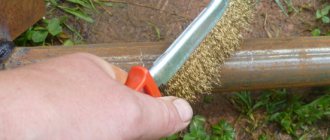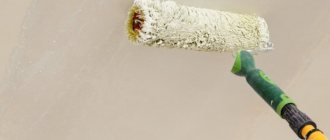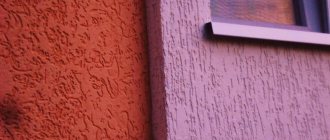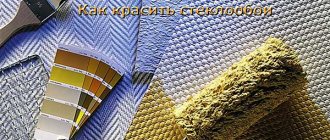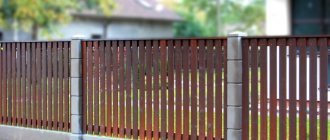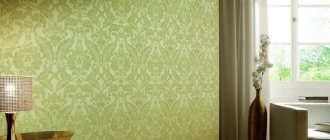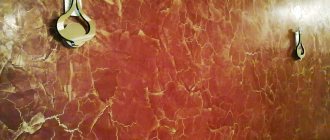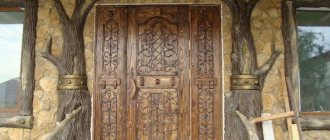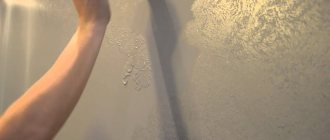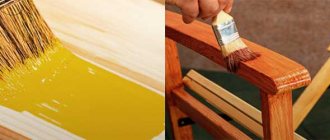A little about bark beetle plaster for facades
The material is a universal decorative finish.
The compositions differ in purpose (for interior and exterior decoration), granule sizes (small and large fractions), fillers, level of plasticity and other performance characteristics.
The list of advantages of the type of plaster mixture includes bark beetle:
- creating a strong and durable coating;
- durable application;
- the ability to level the surface due to the structural texture;
- no shrinkage - prevents the formation of cracks and chips;
- resistance to temperature changes;
- moisture resistance of the coating;
- small load on the floors;
- environmental friendliness, because the material is made from natural ingredients;
- wide range of shades;
- resistance to mechanical damage;
- possibility of painting the coating;
- affordable price;
- the presence of several application techniques;
- possibility of multi-color toning;
- resistance to frost and fire;
- no fading of the coating under ultraviolet rays.
Process adjustment
In order to soften color contrasts as much as possible, the paint can be rubbed with a soft rubber sponge or mitten.
The same can be done in cases where it is important to give the walls a certain relief with a touch of antiquity. Paint with a shade of gold or silver is applied to the recesses and protrusions, barely touching the facade elements with a brush to avoid oversaturation.
It is also worth describing the principle of painting walls with a combination of textured and smooth areas. Craftsmen recommend starting to paint the facade with the design of textured elements.
It would be advisable to start painting a smooth surface only after the textured areas have dried. When re-staining, these rules do not need to be followed.
Advantages and disadvantages of painting for bark beetles
Painting of decorative bark beetle plaster is carried out taking into account the peculiarities of tinting the porous structure of the treated surfaces.
The dense layer needs to be updated by painting to solve the following problems:
- interior renovation without major renovation;
- increasing the protective characteristics of the plaster layer from high humidity;
- visual expansion of the room (using two-color processing or using triple tinting);
- increased resistance to mechanical damage;
- enhancing the operational characteristics of the layer.
The list of shortcomings that are taken into account before painting a bark beetle includes;
- the complexity of multi-layer tinting due to the textured structure of the base;
- the need to use a set of tools and several application techniques;
- reduced aesthetics when using a single color coating for a complex textured base.
Disadvantages of the method
At first glance, it seems that there are no shortcomings in the painting. Unfortunately, experts still note certain disadvantages:
- The process is complex and requires a lot of effort. It will take time, because the surface of the layer has a complex topography, and the paint is distributed unevenly. It will have to be applied with a whole set of tools - a brush, a roller, a foam sponge;
- By limiting yourself to one color scheme, it is difficult to get an unusual result - the wall will look ordinary, without individuality.
Please note that the disadvantages of the method are related to the workflow, and not to the final result.
Which paint is best to choose for painting exterior and interior work on bark beetles?
Before painting bark beetle plaster, you need to select the appropriate type of dye, taking into account the purpose (inside the building, facade decoration), and the type of room (bedroom, living room, hallway). They determine what to paint plastered surfaces with, taking into account the operating temperature, air humidity level, etc.
The following types of paints are used in finishing the coating decorated with bark beetle plaster mixture:
- oil;
- alkyd;
- acrylic.
Some manufacturers produce paint products with a bark beetle effect and special compositions for tinting plastered surfaces.
Manufacturers offer decorative paints to create original effects on substrates. You can choose dyes that imitate sand, silk fabric, stone, genuine leather, etc. Compositions are available to imitate aged and patinated surfaces, reproducing silk-screen printing, velvet or velor surfaces.
These products are of high quality and have a high cost due to the inclusion of mother-of-pearl, silk and other particles. It is possible to create an accent wall panel tinted with pearlescent dyes with a metallic sheen.
The paint color scheme is selected according to the type of room:
- for bedrooms, calm neutral shades (sand, light gray) are recommended;
- living rooms are decorated with more saturated color combinations (combinations of blue and ocher, brown, green, burgundy);
- the kitchen is decorated in different shades depending on the design project; it is possible to use bright colors (yellow, orange, green) or sand, dark brown;
- paints of rich shades (bright orange, green, yellow) are used to decorate children’s rooms;
- in a high-tech style office you can combine dark blue, black dyes with a glossy sheen and white, silver shades.
Oily
Can be used for tinting plastered textured surfaces. The paint has a thick consistency, forms bases rich in color, has an affordable price, is economical to use, and is available in a wide range of shades. However, when applying the composition, it is necessary to take into account the sharp odor of the material, low vapor permeability and fire resistance, and the possibility of fading from ultraviolet rays. The material is negatively affected by alkaline solvents and detergents with abrasive particles.
Alkyd
Such enamels can be used to decorate bark beetle plaster coatings indoors and for outdoor work. The material is optimal for facade finishing, because... forms a durable coating, increases the resistance of the base to climatic precipitation and changes in temperature conditions.
The list of advantages of the dye includes high water-repellent characteristics and resistance to various types of detergents. Work is carried out in a ventilated room or in the open air, because... the dye has a pungent odor. The material is affordable and comes in a wide range of shades. Plastered surfaces treated with alkyd paint do not fade and are resistant to mechanical stress, mold and fungi.
Acrylic
Plaster is painted with dyes of this type. The material is optimal for finishing interior spaces and easily tints plastered surfaces.
Acrylic paint has the following advantages:
- consists of environmentally friendly components and is safe to use;
- the acrylates included in the dye increase the strength of the tinted layer and the durability of the plaster;
- has no odor and is used in the decoration of children's rooms and bedrooms;
- has good vapor permeability;
- features a wide range of shades;
- universal and can be used for different types of surfaces.
Acrylic dyes are divided according to their composition into the following subtypes:
- waterproof;
- lightfast;
- washable.
It is recommended to determine which paint to tint the plaster layer, taking into account the purpose of the room, the type of finishing (facade, interior), and base material.
Manufacturers indicate on the packaging the conditions for using paint. The choice is made in accordance with the design decision.
Acrylic paints can be:
- matte;
- semi-matte;
- with a glossy shine;
- silky.
Why do you need to paint façade plaster?
As a rule, to decorate walls, they take ready-made pastes from different manufacturers, which are white or light gray in color. It is not enough to create a beautiful texture on the facade; to increase its service life it must be painted. This is the main reason why painting is required, but there are others:
- the paint creates a dirt-repellent layer, thanks to which the facade remains clean and attractive longer;
- the paint layer reduces moisture absorption, preventing peeling of the plaster in winter;
- By painting in different shades of the same color or in different colors, you can achieve different optical effects, enriching the plasticity of the facade, making it more decorative and attractive.
It is advisable to select the paint for painting in accordance with the composition of the plaster: for acrylic - acrylic, for silicone - the same composition.
What does painting on the facade give?
Tinting the plaster composition can be done by adding color to the mixture, varnishing or waxing the surface. However, painting the bark beetle in two or more shades allows you to create an original design for the room, increase the strength of the base and the protective characteristics of the coating.
With the help of tinting, you can zone the space without the use of additional finishing materials. You can paint the surfaces with elegant paintings, ornaments, reproduce reproductions of paintings, etc.
Advantages of painting decorative plaster
The disadvantages of bark beetle staining have already been mentioned above; it’s time to talk about the advantages of the procedure:
- By painting the facade, you can create individual, original design styles by experimenting with a combination of tones. An additional plus is the paint applied in two tones, which looks especially unusual and elegant.
- Treating the surface in this way allows you to provide the walls with reliable protection from external irritants, be it precipitation and changeable temperatures or ultraviolet rays and wind.
- The choice of paint is not limited - depending on personal preferences, the home owner can choose both colored and white paint for finishing the bark beetle facade.
The right decision would be to analyze photos of finished works available on the Internet and in thematic publications using different types and shades of paint in order to finally decide on the desired material option.
What else you need to know about facade painting
Before painting the bark beetle, experts recommend taking into account the following nuances that simplify repair work:
- To obtain a uniform surface and reduce labor costs, craftsmen advise adding the required color to the plaster mixture to match the tone of the future dye. Painting work will be completed in a short time.
- When purchasing material, it is important to choose certified quality products. Facade paint must be safe. When using licensed products, a durable and safe coating is created.
- Before painting the plastered surface, it is recommended to thoroughly dry the base layer. When applying dye to an undried base, streaks will remain and the coating will be uneven.
We paint bark beetles - what do you need to know?
To make the task of painting the inside of the wall texture easier, you can add color to the plaster solution during the process of mixing it.
If the material was not purchased on the market, then tinting can be ordered immediately. As a rule, specialists provide assistance in choosing the right shade. Facade paint for painting is selected based on water or organic solvents.
Successful options are silicone, acrylic and silicate compounds, which apply better and dry faster.
Painting the walls will be possible only after the layer of bark beetle plaster has completely dried, which takes on average up to 48 hours, and the base has been prepared. For painting, you can use a wide brush, as well as a special mitten or roller.
An unusual effect can be achieved if you use a short-haired roller for painting. Due to this, it is possible to achieve the formation of a contrasting “bark beetle” pattern on the wall. The effect can be softened by façade paint added to the plaster and subsequent painting of the surface in the same color.
Bark beetle painting technology
You can paint the bark beetle with your own hands in several ways:
- contrasting blocks;
- slightly update the texture emphasizing the previous color scheme;
- using tinting in stripes or areas with contrasting shades to delimit functional areas in a living room or apartment with a studio layout;
- with a patination or gilding effect (this will add luxury) to the interior.
The work is carried out in compliance with the following stages:
- cleaning and leveling surfaces;
- choice of design solution;
- applying a base layer of coloring composition;
- finishing work.
Preparatory work and tools
Before painting the bark beetle in two colors or performing a single-color coating, you need to prepare the surfaces. It is necessary to cover furniture, non-paintable areas of the interior, and lamps with plastic sheeting. It is necessary to vacuum the plastered surface or remove dust and small crumbs with a dry cloth.
You can determine whether the bark beetle needs to be primed before painting, taking into account the quality of the base. If there are any irregularities, treatment is required. The coating is applied evenly, the recesses are filled with soil.
The work will require the following tools:
- rollers:
- a set of brushes (compact, wide);
- sponge;
- spray;
- containers for paint, etc.
The work is carried out in special clothing, the kit includes a respirator, goggles, and gloves.
Applying paint to the wall
Experts recommend first applying the dye to a small area of the wall to check the compatibility of the shades. The main surface tinting is performed after the primer layer has dried. In the living space, painting is carried out with a high-quality acrylic or water-based composition. The material is applied from top to bottom to prevent drips.
It is important to determine which roller is optimal for applying paint. The standard tool used is medium bristle. Wide areas are processed with a roller. Corner and other hard-to-reach areas are painted with a brush.
Choosing paint for the bark beetle
There is no specialized paint for bark beetle plaster. For this reason, the most suitable building materials should be selected. Painting the outside of the house should be done as soon as possible after the putty has dried. It is better to buy dyes with a reserve.
Note! It is better to choose a combination of shades according to color palettes or on the recommendation of professionals. Bark beetle facade paint is available in a wide range. The choice is huge - from manufacturer brands to color palettes.
Oily
The emulsion has a large selection of shades, the surface is rich and bright. Among the negative qualities noted:
- there is no vapor permeability;
- the painted surface is afraid of the effects of alkaline elements;
- low fire resistance.
For decorative plaster in the bark beetle style, oil paints are considered obsolete. For this reason, it is recommended to use innovative component mixtures.
Alkyd
The suspension is great for outdoor work. Due to the fact that the paint has a rich odor. Treated walls indoors can take several years to weather. The advantages include:
- reasonable cost;
- resistance to temperature fluctuations and resistance to moisture.
Acrylic
Experienced plasterers recommend using acrylic for painting bark beetle plaster. Positive differences include:
- environmental friendliness and health safety;
- The acrylates included in the emulsion recipe make the surface layer strong and durable;
- many different colors make it possible to implement the most daring design solutions;
- good vapor permeability allows the walls to breathe without destroying the surface of the structure.
From the above advantages, we can summarize that texture paint for relief coatings is the best option. According to the standards, paint consumption per 1 m2 ranges from 180 to 300 grams.
Various options for painting the facade of a house using plaster
Several options for coloring bark beetle plaster mixture have been developed.
On the list of those in demand:
- adding color to plaster;
- painting in two layers;
- tinting the primer.
First option: initial tinting of the paint mixture
A simple way to tint is to tint the solution. It is important to correctly assess the proportions of adding dye to the plaster mixture. The color is added to the plaster at the mixing stage. The solution is then applied to the surface. The coating must be thoroughly dried for 2-3 days.
At the next stage, the surface is painted in different ways, including:
- Using paint of the same color scheme with a tinted plaster mixture. It is permissible to use a dye of a darker tone.
- Using a shade different from the plastered base.
- Painting with a roller or a special apparatus with a sprayer to achieve a uniform color of the textured base.
Second option: double coloring
Painting the plaster layer in two colors or monochromatic tinting in two shades looks impressive in an apartment. The technology makes it possible to increase the strength of the base, prevent cracking of paint, and increase the service life of the room.
The work is carried out in stages:
- The first treatment is carried out with a dense thick layer to fill small depressions on the surface.
- Then the surface is blotted with a sponge to remove excess paint.
- After the first layer has dried (readiness time is indicated by the manufacturer on the packaging), re-painting is performed using a fine-pile roller. Painting in two colors should be carried out promptly to prevent the formation of uneven surfaces.
When double painting, you can use the technique of creating textured patterns and blurred spots on a base treated with a mixture of bark beetles.
The work is performed in the following sequence:
- The walls are tinted in the base color.
- Using a sponge or brush, a pattern is created on the surface with paint of a different tone.
- It is possible to use rollers with a stencil pattern to create a textured pattern.
Third option: using a primer
The next painting method involves using a primer. The technology must be used before repainting the finished layer of bark beetle without color.
The selected shade is added to the priming mixture, which is thoroughly mixed. The surfaces are treated with a primer, filling small cracks and depressions, and creating a protective coating. After drying, another layer is applied. Coloring can be uniform or two-color.
The use of a primer helps extend the life of the finish, increases the antiseptic properties of the base, preventing the formation of mold and cracks.
Before painting decorative plaster, a primer is selected from the following types of mixture:
- adhesive;
- deep penetration;
- universal.
Adhesive primers are used to improve the adhesion characteristics of bark beetle-treated substrates. The material is used for finishing smooth substrates. The adhesive primer mixture contains fine fractions that roughen the base, increasing adhesion.
A deep penetration primer increases the strength of the base and improves the adhesion quality of finishing layers. This type of primer is optimal for treating plastered surfaces, because penetrates into the structure of the base and ensures even application of paints and varnishes.
Universal primers improve the adhesion of the base, increase the strength of the panels, and ensure even coloring of the plaster layer of bark beetles. The primer forms a film coating on the facade and is used as a base for bark beetle plastered walls, ceilings, etc.
Choosing paint
To paint textured plaster, you can use a variety of paint coatings, but there are no special paint coatings for the bark beetle.
Oily
Such paints have rich colors and bright shades, but due to their disadvantages they are not very popular:
- Low vapor permeability;
- Does not resist alkalis;
- Low fire resistance.
They can be called outdated, so it is worth considering more modern options.
Acrylic
It is considered the most optimal option for the bark beetle - such a suspension has a whole list of advantages:
- Environmental friendliness;
- The acrylates that make up this paintwork are distinguished by their strength and durability;
- A wide range of colors, which allows you to implement any design project;
- Vapor permeability - moisture will evaporate freely from building materials.
Textured
Mainly used for metal. The special filling of this paint allows you to imitate wood worn away by insects. Textured paintwork for the facade is made on the basis of water-dispersed acrylic mixtures. It is worth noting the high service life, high vapor permeability, frost resistance, and durability. It allows you to hide cracks, flaws on the surface, and realize any fantasies.
As for the disadvantages, it is worth noting the high costs, high consumption of material, and the need for skills when applying such material.
Alkyd
Designed for outdoor work - during interior work, the specific smell disappears for a very long time. Among the advantages are the low price, good resistance to humidity and temperature.
Structural
Another alternative option for bark beetles is structural paint; it is applied with a brush, roller or other accessories. It also allows you to create a certain relief on a flat surface. The cost of such a coating is quite high, but the ability to experiment with texture and the absence of surface requirements make it popular.
Classic way
In this case, the procedure involves using one color. In this case, a uniform layer is applied in one step. To do this, spread the paint with a long-haired roller or using a sprayer, while simultaneously painting the grooves and recesses carefully with a brush. During the painting process, smudges will appear, which must be immediately rubbed off with a sponge or mitten.
The paint is applied up and down with a roller, but each subsequent vertical layer must cover the previous one. When using a brush, the direction of the tool should be alternating - sometimes vertical, sometimes horizontal, which guarantees uniform application of the layer.
To save money, you can use a tinted primer, which is directly applied to the plaster. After this layer has dried, the paint is applied with a roller, but additional painting of the recesses is no longer necessary.
To simplify the painting procedure, you can use the plaster tinting method. To do this, you need to add the colored pigment directly to the solution before applying it to the walls.
An important condition for uniform painting of the bark beetle is to create the same shade for all the required solution. After the finishing layer has dried, apply another layer of paint on top with a roller, but avoid getting it into the recesses.
It is worth understanding that only polymer acrylic plaster can be tinted. Cement dry mixtures cannot be pigmented, since when more than 5% of coloring pigment is added, their quality sharply decreases, which affects wear resistance.
Stages of life
The life cycle of the bicolor bark beetle, like other bark beetles, begins from egg to four larval instars and ends with pupa and finally adult beetles.
Eggs
The eggs of the bicolor bark beetle are pearly white, oblong, 0.75–1.0 mm long. The eggs are laid in separate niches or elongated grooves on the inner sides of the bark.
Larva
The larvae are creamy white, cylindrical, rather strong, wrinkled, without legs, 6–7 mm in adulthood. The head is pale brown to pale rust in color.
Doll
The pupa is creamy white, about 6 mm long, becoming pale brown in adulthood. The pupae have legs and maturing wings that are clearly visible.
Immature or Hebrew, adults after transformation from pupae are first white and then medium brown. Mature adults are mostly all black and have rust-colored wings. Adult larvae are approximately 6 mm in length.
After spending the winter under the bark, young bark beetles emerge in the summer to begin the process all over again.
Adult beetles live only 21 days during the summer months. The activity of the thuja bark beetle usually stops when the temperature drops below 10º C.
In many areas, the maturation rate of bark beetles is one year. In colder areas, this figure can reach two years. However, new research shows that in response to warmer temperatures, bark beetles are emerging more than a month earlier than historically recorded. This early emergence causes the beetles to lay their eggs earlier, allowing them to develop faster during the summer to produce adult beetles by August. This in turn causes more pests to attack more trees, spread further and produce more eggs.
With the exception of a few days in the summer when the adult beetles emerge from the trees and fly off to attack new host trees, all of the bark beetle's life stages are spent under the bark of pine trees.
Adult females emerge when the ambient temperature exceeds approximately 16ºC, and she finds a suitable male emitting aggregating pheromones to initiate reproduction.
The males join the females, and each pair builds a gallery of eggs under the bark.
Eggs are laid and hatch into larvae, which feed on phloem in feeding channels built at right angles to the egg gallery.
